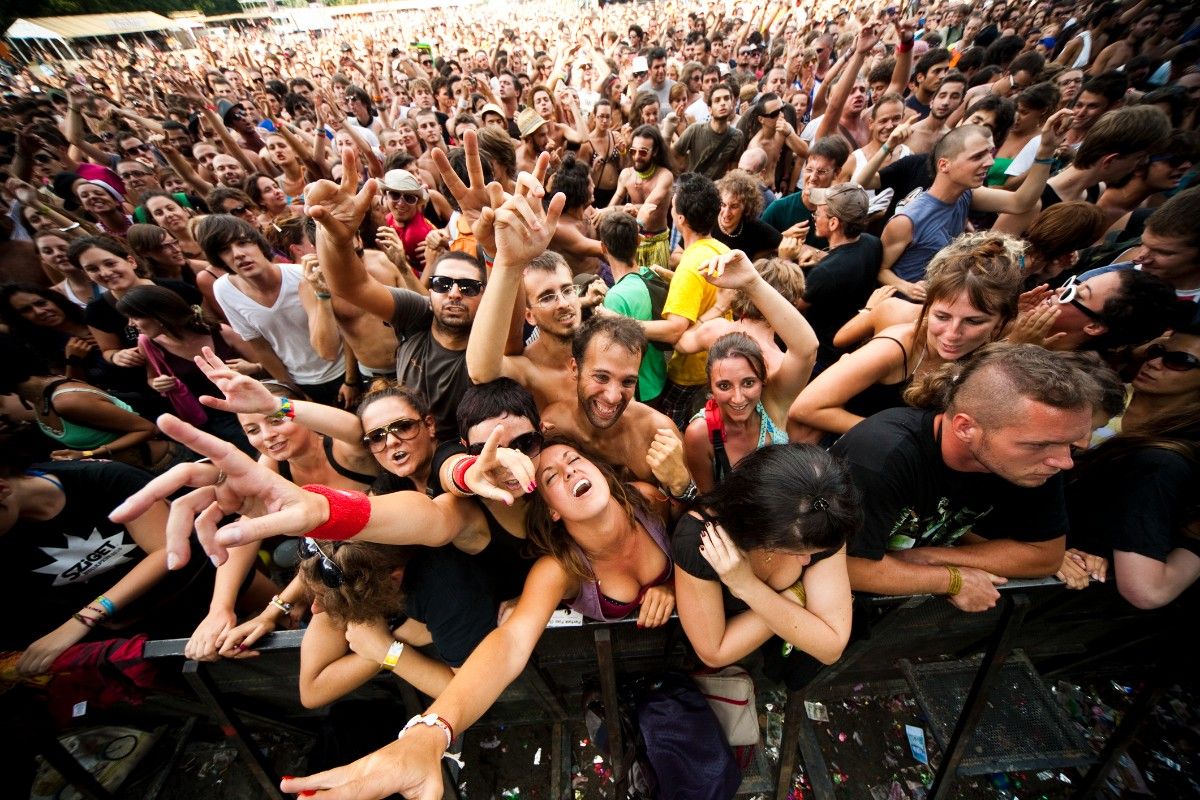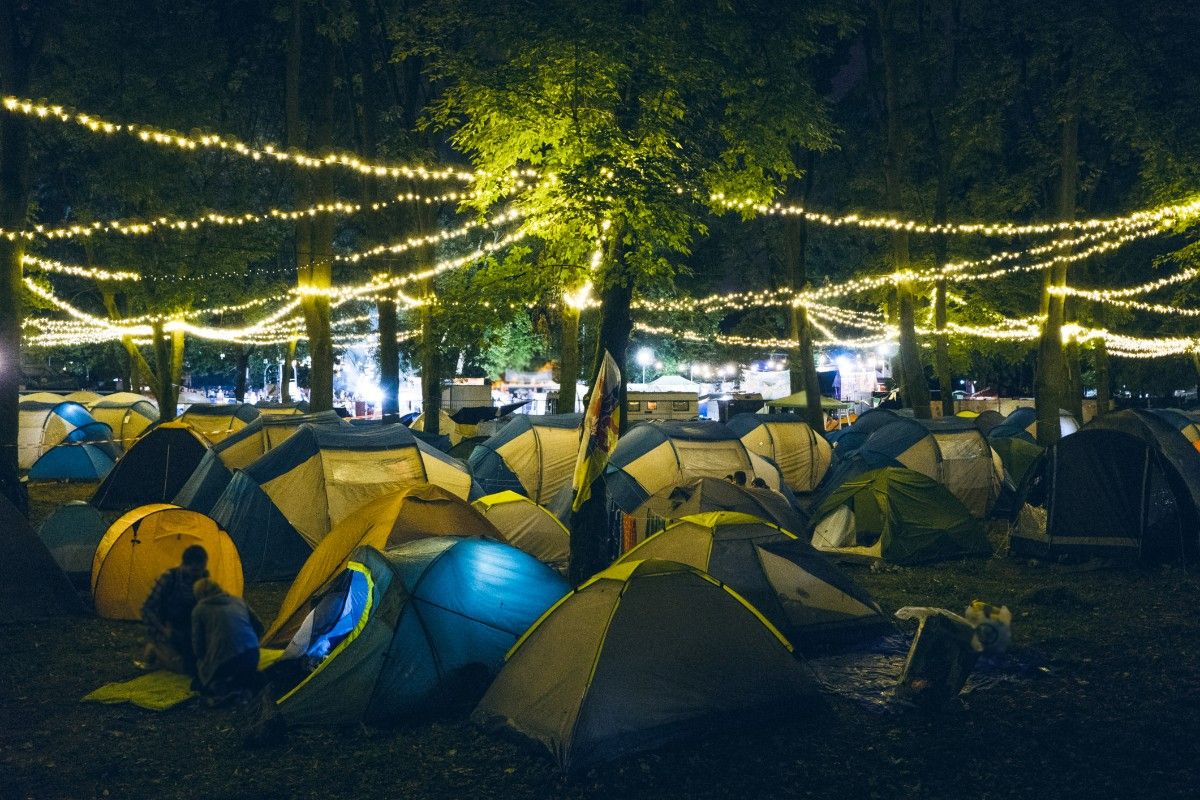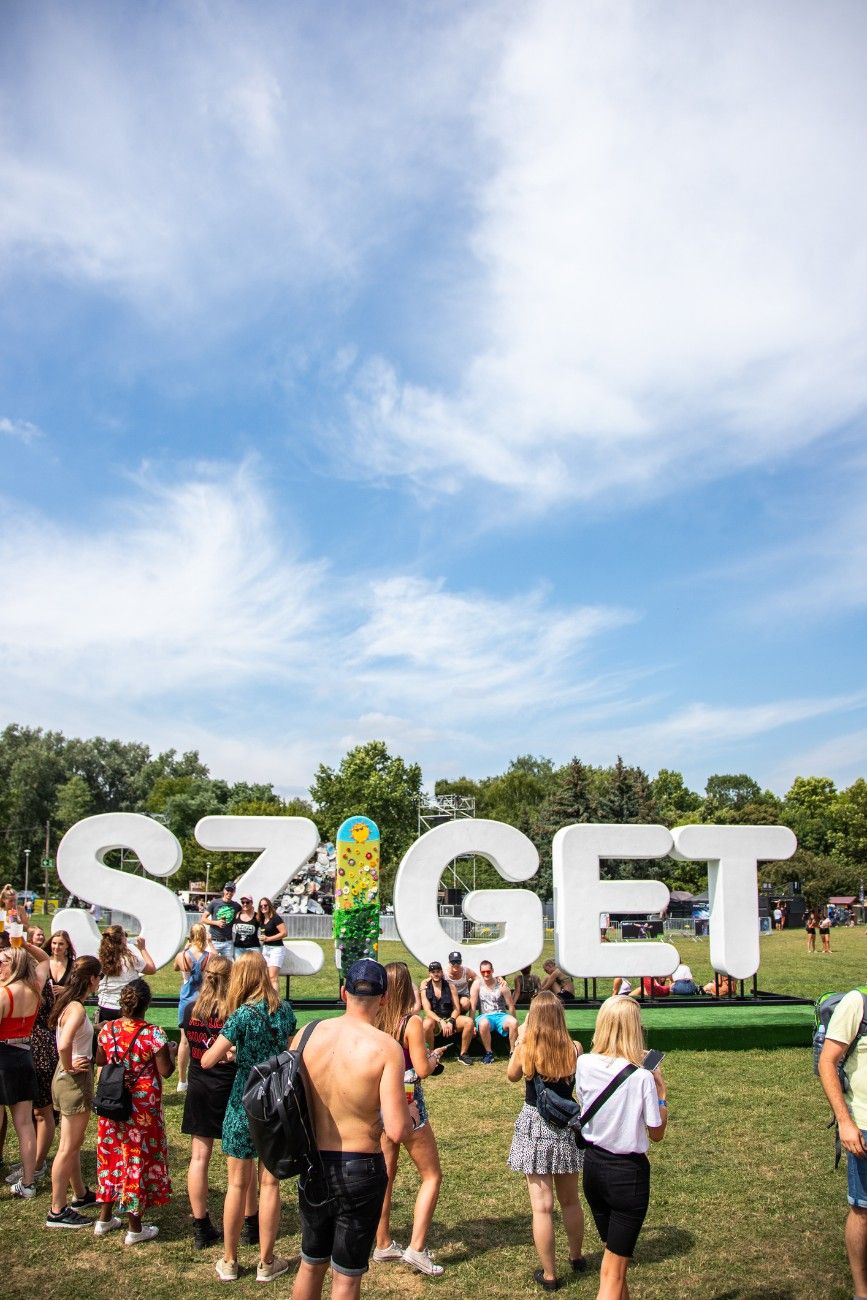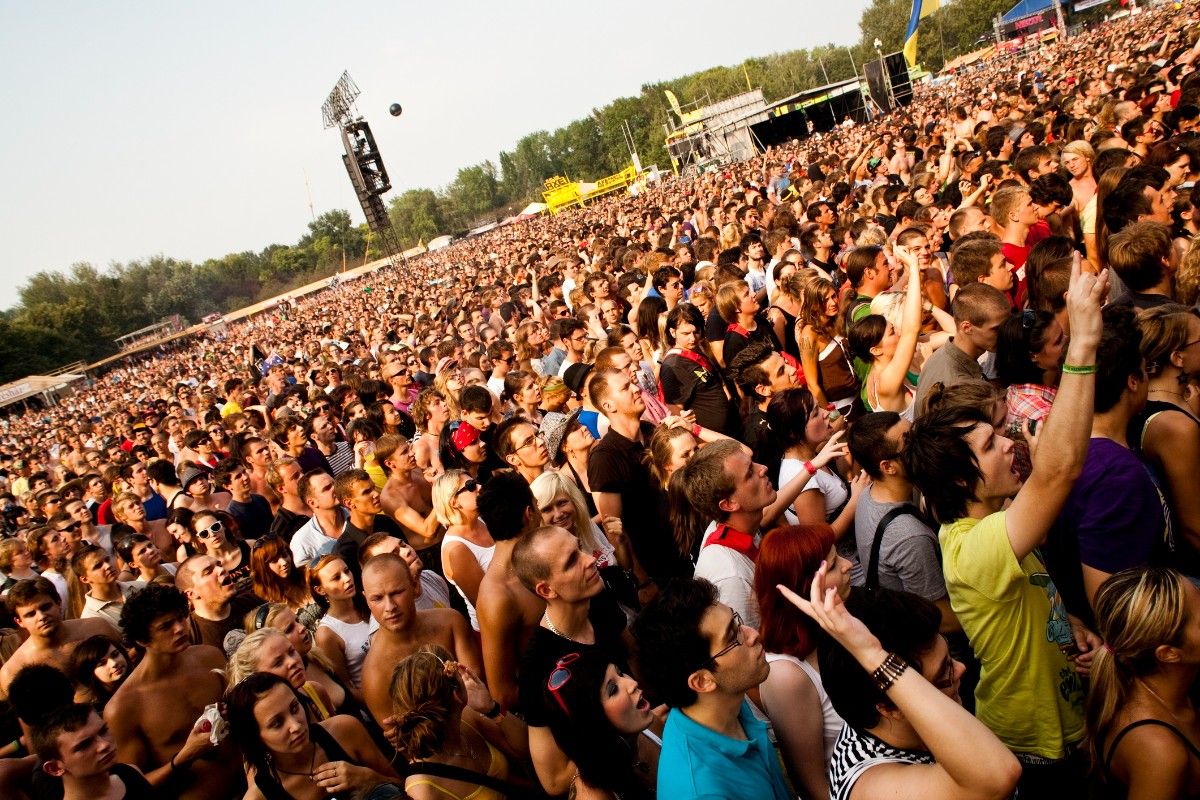Sziget Festival, a cultural phenomenon that has captured the hearts of music lovers worldwide, stands as one of Europe's largest and most diverse music and arts festivals. This comprehensive guide will delve into the essence of Sziget, exploring its rich history, vibrant atmosphere, and the myriad experiences it offers to festivalgoers. From its humble beginnings to its current status as a global attraction, we'll uncover the magic that makes Sziget Festival a must-attend event for music enthusiasts and culture seekers alike.
In the following sections, we'll explore the festival's origins and evolution, its unique location and venue, the incredible lineup and musical offerings, practical information for attendees, the festival's impact on Budapest and beyond, and what the future holds for this extraordinary celebration of music and art. Whether you're a seasoned Sziget veteran or considering your first visit, this guide will provide you with all the essential information and insider tips to make the most of your Sziget Festival experience.
The Birth and Evolution of Sziget Festival
Early Beginnings
The story of Sziget Festival begins in 1993, shortly after the fall of communism in Hungary. Born from the vision of music enthusiast Károly Gerendai and his friends, the festival was initially conceived as a student-run event aimed at celebrating newfound freedom and cultural expression. The inaugural edition, held on Óbudai-sziget (Old Buda Island) in Budapest, attracted around 43,000 attendees, primarily from Hungary and neighbouring countries.
The festival's name, "Sziget," meaning "island" in Hungarian, perfectly encapsulated its unique setting and philosophy. From the outset, Sziget aimed to create a space where young people could come together, free from the constraints of everyday life, to enjoy music and art in a spirit of openness and creativity.
In its early years, the festival focused primarily on local and regional acts, reflecting its roots in the Hungarian music scene. However, the organisers had grander ambitions, envisioning Sziget as a bridge between Eastern and Western European cultures. This vision would shape the festival's evolution in the years to come.
Despite its modest beginnings, Sziget quickly gained popularity. By the mid-1990s, it had already become one of the largest cultural events in Hungary, attracting a growing number of international visitors. The festival's duration expanded from its original four days to a week-long extravaganza, allowing for a more diverse and comprehensive programme.
However, this rapid growth was not without challenges. The organisers faced financial difficulties and logistical hurdles as they sought to accommodate the increasing number of attendees and meet their rising expectations. Yet, these early struggles would prove crucial in shaping Sziget's resilient and innovative spirit.
International Recognition and Expansion
As Sziget entered the new millennium, it began to gain significant recognition beyond Hungary's borders. The festival started attracting more international acts, gradually building a reputation as a must-play event for artists from around the world. This period saw Sziget evolve from a primarily music-focused event to a more comprehensive arts and culture experience.
The introduction of new stages and performance areas allowed for a more diverse lineup, encompassing not just music but also theatre, dance, circus acts, and visual arts. This multidisciplinary approach set Sziget apart from many other European festivals and contributed to its growing international appeal.
By the mid-2000s, Sziget Festival had firmly established itself as one of Europe's premier festivals. The lineup began to feature global superstars alongside up-and-coming acts from around the world. This blend of established and emerging talent would become a hallmark of Sziget's booking policy, ensuring the festival remained both current and forward-looking.
The festival's growth is reflected in its attendance figures. From those initial 43,000 visitors in 1993, Sziget has grown to attract over 500,000 people from more than 100 countries in recent years. This remarkable growth has seen Sziget Festival's capacity expand to accommodate the increasing demand, with the site now able to host tens of thousands of revellers each day.
Throughout its evolution, Sziget has maintained a commitment to diversity and inclusivity. The festival prides itself on offering a wide range of musical genres, from rock and pop to electronic, world music, and jazz. This eclectic approach has helped Sziget appeal to a broad audience and stay relevant in an ever-changing musical landscape.
Awards and Recognition
Sziget's growth and commitment to excellence have not gone unnoticed in the festival industry. The event has received numerous accolades over the years, including being named 'Best Major Festival' at the European Festival Awards in 2011 and 2014. These awards have cemented Sziget's status as a leader in the European festival scene and have helped to attract even more international attention.
The festival's success has also led to partnerships with major brands and media outlets, further expanding its reach and resources. These collaborations have allowed Sziget to continue innovating and improving the festival experience while maintaining its independent spirit and commitment to artistic integrity.
As Sziget Festival approaches its fourth decade, it continues to evolve and push boundaries. Each year brings new additions to the festival experience, whether it's innovative stage designs, cutting-edge art installations, or novel ways for attendees to engage with the event. The festival's commitment to providing a diverse, inclusive, and unforgettable experience remains at the core of its identity, ensuring that Sziget continues to be a beacon of creativity and freedom in the European festival landscape.
Sziget Festival's Unique Location and Venue
The Island Paradise
Sziget Festival's location on Óbudai-sziget, an island in the heart of Budapest, is one of its most distinctive features. This 108-hectare island, nestled in the Danube River, provides a truly unique setting for a music festival, offering both natural beauty and proximity to one of Europe's most vibrant cities.
Óbudai-sziget, also known as Old Buda Island, has a rich history dating back centuries. In the past, it has served various purposes, from a shipyard to a recreational area for Budapest's residents. Today, it is best known as the home of Sziget Festival, transforming each August into a bustling hub of music, art, and culture.
The island's location is particularly advantageous for festivalgoers. It's easily accessible from central Budapest, yet its island status creates a sense of separation from the everyday world. This physical boundary contributes to the festival's atmosphere of freedom and escapism, allowing attendees to fully immerse themselves in the Sziget experience.
The natural features of the island are incorporated into the festival design, with many stages and activity areas nestled among trees or set against the backdrop of the river. This integration of nature and festival infrastructure creates a unique ambiance that sets Sziget apart from many other urban festivals.
One of the most beloved areas of the festival is the Beach, a sandy stretch along the Danube where attendees can relax, swim, and enjoy music from the Beach Stage. This area perfectly encapsulates the festival's laid-back atmosphere and provides a welcome respite from the more intense parts of the event.
The island's setting also allows for some truly spectacular visual elements. The sight of the Main Stage lit up at night, with the lights of Budapest twinkling in the background across the Danube, is an unforgettable image for many Sziget attendees. Similarly, the nightly fireworks displays, launched from barges on the river, provide a stunning spectacle that takes full advantage of the island setting.
Festival Layout and Infrastructure
The festival grounds are divided into various areas, each with its own character and offerings. The Main Stage, capable of hosting up to 60,000 spectators, is where the biggest acts perform. Its size and state-of-the-art sound and lighting systems ensure that even those at the back of the crowd can enjoy the performances.
Beyond the Main Stage, Sziget boasts numerous other performance spaces catering to different musical tastes and crowd sizes. The festival site is also dotted with numerous facilities to ensure attendees' comfort and enjoyment. These include a wide array of food and drink vendors offering cuisines from around the world, numerous toilet and shower facilities, lockers for valuables, charging stations for electronic devices, and information points for any queries or issues.
One of the most impressive aspects of Sziget's venue is its capacity to host such a large number of people while maintaining a sense of intimacy and community. Despite attracting hundreds of thousands of visitors over its duration, the festival never feels overwhelmingly crowded. This is partly due to the thoughtful layout of the site, with areas of high activity balanced by quieter spaces where attendees can relax and recharge.
Accommodation Options
Accommodation is a crucial aspect of the Sziget experience, and the festival offers various options to suit different preferences and budgets. The most popular choice is camping on the island itself. The festival's campsite is vast, covering a significant portion of Óbudai-sziget and capable of hosting tens of thousands of tents. Different camping zones cater to various needs, from basic pitch-your-own-tent areas to more luxurious 'glamping' options with pre-set tents and additional amenities.
There are different camping zones at Sziget Festival. These include:
- Basic Camping (free with appropriate tickets)
- Siesta Camping (for those looking for shady spots)
- Caravan Camping
- Sziget Ville Comfort and Boutique (for higher-level camping)
- Family Camping (for families with children under 11)
Glamping upgrades include:
- Pre-pitched tents
- Love Cabins
- Wooden Huts
- Bell Tents
- Igloo BoX (with air conditioning)
- Various sizes of Igloos
The variety of accommodation options contributes to the festival's inclusive atmosphere, allowing attendees from different backgrounds and with different budgets to enjoy the Sziget experience in their own way.
Sustainability Initiatives
Sziget Festival's venue is not just a place for performances; it's a temporary city that comes to life for one week each year. The site includes art installations, pop-up bars and clubs, sports facilities, a cinema, and even a 'festival hospital' staffed by medical professionals. This comprehensive approach ensures that attendees have everything they need without having to leave the island, contributing to the immersive nature of the Sziget experience.
The festival's commitment to sustainability is evident in its approach to venue management. Sziget has implemented various eco-friendly initiatives, including a comprehensive recycling programme, the use of reusable cups, and efforts to reduce water and energy consumption. These measures not only minimise the festival's environmental impact but also help to preserve the natural beauty of Óbudai-sziget for future generations of festivalgoers.
In essence, Sziget Festival's unique location and thoughtfully designed venue are integral to its identity and success. The combination of natural beauty, urban proximity, and carefully curated festival infrastructure creates an environment unlike any other in the festival world. It's this special setting that allows Sziget to offer its trademark blend of musical diversity, cultural exchange, and free-spirited atmosphere, making it a truly one-of-a-kind event in the global festival calendar.
The Sziget 2024 Lineup
The Main Event
Sziget Festival 2024 is set to be an unforgettable musical extravaganza, with a star-studded lineup that promises to deliver electrifying performances across various genres. The festival, taking place from August 7-12 in Budapest, Hungary, has secured some of the biggest names in the music industry as headliners.
Sam Smith, the Grammy-winning English singer-songwriter, is set to bring their soulful vocals and chart-topping hits to the Sziget stage. Known for their powerful ballads and recent forays into dance-pop, Smith's performance is sure to be a highlight of the festival.
Electronic dance music fans will be thrilled to see Martin Garrix headlining. The Dutch DJ and producer has become a global sensation with his high-energy sets and infectious beats. Garrix's performance is guaranteed to turn the island into a massive dance party.
Pop icon Kylie Minogue will grace the Sziget stage, bringing her decades of hits and unmatched stage presence. The Australian superstar's set is likely to be a glittering showcase of pop perfection, featuring both classics and tracks from her recent chart-topping album.
Grime superstar Stormzy is set to deliver a hard-hitting performance that showcases his rapid-fire lyrics and commanding stage presence. As one of the UK's most influential artists, his set is not to be missed.
Janelle Monáe, the multi-talented artist known for her genre-defying music and captivating performances, will bring her unique blend of R&B, funk, and pop to Sziget. Monáe's set promises to be a visually stunning and musically diverse experience.
Fred Again.., the rising star of electronic music, is another exciting headliner. Known for his emotive productions that blend electronic beats with found sounds and vocal samples, his live set is sure to be an immersive journey.
Liam Gallagher, former Oasis frontman and British rock icon, will bring his swagger and unmistakable voice to Sziget. Expect a set filled with solo material and beloved Oasis classics that will have the crowd singing along.
Halsey, the American pop star known for her powerful vocals and honest lyrics, is set to deliver a dynamic performance. Her set is likely to feature hits from her impressive catalogue as well as tracks from her most recent album.
Louis Tomlinson, former One Direction member turned solo artist, will bring his indie-pop sound to Sziget. His performance is sure to attract both longtime fans and new listeners alike.
Other Notable Acts
Beyond the headliners, Sziget 2024 boasts an impressive array of artists across various genres, ensuring there's something for every music lover.
AURORA, the ethereal Norwegian singer-songwriter, will bring her unique brand of art-pop to the festival. Her haunting vocals and captivating stage presence are sure to create a magical atmosphere.
Indie rock fans will be excited to see Editors on the lineup. The British band, known for their atmospheric sound and emotive performances, are festival veterans who always deliver a memorable set.
Big Thief, the critically acclaimed indie folk-rock band, will showcase their intricate songwriting and raw, emotional performances. Their set is likely to be a highlight for fans of more intimate, guitar-driven music.
Electronic music enthusiasts have plenty to look forward to with Four Tet on the bill. The prolific producer and DJ is known for his eclectic, genre-spanning sets that seamlessly blend various electronic styles.
Becky Hill, the British singer-songwriter who has become a staple of UK dance-pop, will bring her energetic performance and powerful vocals to Sziget. Expect a set filled with chart-topping collaborations and solo hits.
Crystal Fighters, known for their unique blend of electronic and Basque folk music, are set to deliver a high-energy performance that's sure to get the crowd moving.
For fans of harder electronic sounds, Skrillex's addition to the lineup is exciting news. The Grammy-winning producer and DJ is known for his intense, bass-heavy sets that push the boundaries of electronic music.
RAYE, the rising British R&B star, will showcase her smooth vocals and honest songwriting. After breaking free from major label constraints, her performance is likely to be a celebration of artistic independence.
Indie rock enthusiasts will be pleased to see Fontaines D.C. on the bill. The Irish post-punk revival band has been making waves with their intense live performances and poetic lyrics.
Electronic music is well-represented with acts like Richie Hawtin, Honey Dijon, and Sven Väth bringing their expert DJ skills to the festival.
For those seeking something a bit different, Marc Rebillet, known for his improvised electronic performances, is sure to deliver a unique and entertaining set.
The festival also showcases a variety of up-and-coming acts. Blondshell, the project of Sabrina Teitelbaum, brings raw, confessional indie rock to the lineup. Yard Act, with their speak-sing post-punk, are another rising act to watch.
World music fans will appreciate the inclusion of Meute, the techno marching band from Germany that reimagines electronic music with acoustic instruments.
The diversity of the lineup extends to hip-hop with acts like Teezo Touchdown bringing his unique style to Sziget.
For those who enjoy theatrical performances, L'Impératrice's disco-infused French pop is sure to be a crowd-pleaser.
Sziget's commitment to showcasing talent from various countries is evident with the inclusion of acts like Azahriah from Hungary and Joker Out from Slovenia.
The festival also caters to fans of heavier music with acts like Grandson bringing their blend of rock and electronic music to the lineup.
With this diverse and exciting lineup, Sziget Festival 2024 promises to be a celebration of music that spans genres, generations, and geographical boundaries. Whether you're a fan of pop, rock, electronic, hip-hop, or anything in between, there's sure to be something that will make your festival experience unforgettable.
Practical Information for Sziget Festival Attendees
Tickets and Pricing
Understanding Sziget Festival prices and ticketing options is crucial for attendees planning their visit. The festival offers several ticket types to cater to different preferences and budgets. The most comprehensive option is the 7-day pass, which grants access to the full week of festivities. For those unable to commit to the entire duration, 5-day and 3-day passes are also available. Additionally, day tickets are sold for those who wish to attend on specific days only.
Sziget Festival tickets are typically released in phases, with early bird tickets offering the best value. Prices generally increase as the festival date approaches, so it's advisable to book early if you're certain about attending. Even at full price, Sziget offers excellent value considering the number and calibre of acts performing.
When purchasing tickets, it's crucial to buy from official sources to avoid fraud. The festival's official website is the safest option, though there are also authorised resellers in various countries. Sziget uses a wristband system for entry, which you'll receive in exchange for your ticket upon arrival at the festival.
It's worth noting that camping on the island is included in the price of multi-day tickets. However, if you're opting for upgraded accommodation or planning to stay off-site, you'll need to factor in these additional costs when budgeting for your Sziget experience.
Travel and Accommodation
Planning your journey to Sziget Festival Budapest is an important part of the preparation process. If you're coming from outside Hungary, Budapest is well-connected by air, rail, and road. The city's Ferenc Liszt International Airport serves numerous international destinations, and there are regular train and bus services from other European cities.
Once in Budapest, getting to Óbudai-sziget is relatively straightforward. The festival organises shuttle buses from key points in the city, and there are also regular public transport options. The HÉV suburban railway and several bus lines stop near the festival entrance. Many attendees also choose to travel by boat, with special Sziget boat services operating during the festival period.
As for accommodation, camping on the island is the most popular and immersive option. Basic camping is included in the price of multi-day tickets, but you'll need to bring your own tent and camping gear. For those seeking more comfort, Sziget offers various upgraded camping options at additional cost, including pre-pitched tents, podpads, and mobile homes.
If camping isn't your style, Budapest offers a wide range of accommodation options, from hostels to luxury hotels. However, keep in mind that prices in the city tend to increase during the festival period, and you'll need to factor in daily travel to and from the island.
On-Site Facilities and Services
Sziget Festival operates on a cashless system, which means you'll need to top up your wristband with credit to make purchases within the festival grounds. This can be done at various points throughout the site or online. Remember to only load what you think you'll need, as refunds for unused credit can be a bit of a hassle.
Food and drink options at Sziget are plentiful and diverse. The festival prides itself on offering a wide range of cuisines to cater to all tastes and dietary requirements. There are numerous food stalls scattered throughout the site, offering everything from local Hungarian specialities to international fare. Vegetarian, vegan, and gluten-free options are readily available. Drinks-wise, you'll find bars serving a variety of alcoholic and non-alcoholic beverages. Water refill points are also available across the site - staying hydrated is crucial, especially during hot summer days.
Sanitation facilities are an important consideration at any festival, and Sziget doesn't disappoint in this regard. There are numerous toilet blocks throughout the site, including both portable toilets and flushing toilets. Shower facilities are also available, though be prepared for queues during peak times. It's a good idea to bring your own toilet paper and hand sanitiser, just in case.
Medical services are readily available at Sziget. There's a main medical centre on site, staffed by qualified professionals, as well as several first aid points scattered around the festival. If you have any health concerns, don't hesitate to seek help - the staff are there to ensure everyone's safety and wellbeing.
What to Bring and Festival Rules
When it comes to what to bring to Sziget, less is often more. Essentials include comfortable shoes (you'll be doing a lot of walking), weather-appropriate clothing (be prepared for both sun and rain), a reusable water bottle, sunscreen, and any personal medications you might need. If you're camping, don't forget your tent, sleeping bag, and other camping gear.
Sziget has a strict policy on what items are allowed into the festival. Generally, outside food and drink, glass bottles, and any items that could be considered weapons are prohibited. There are security checks at the entrance, so be sure to check the festival's website for a full list of prohibited items before packing.
Weather is always a factor to consider when attending an outdoor festival. Budapest in August is generally warm and sunny, with average temperatures around 25°C. However, rain is always a possibility, so packing a light raincoat or poncho is advisable. Also, be prepared for it to get cooler in the evenings.
Finally, it's worth mentioning that Sziget Festival has a strong commitment to sustainability and encourages attendees to be environmentally conscious. There are recycling points throughout the site, and the festival has initiatives to reduce waste and energy consumption. By being mindful of your environmental impact, you can help ensure that Sziget remains a beautiful and sustainable event for years to come.
Sziget Festival's Impact on Budapest and Beyond
Economic Boost for Budapest
Sziget Festival has become a major economic driver for Budapest, generating significant revenue for the city and its businesses. Each year, the festival attracts hundreds of thousands of visitors from all over the world, many of whom extend their stay to explore the city before or after the event. This influx of tourists provides a substantial boost to local businesses, including hotels, restaurants, bars, and shops.
The economic impact of Sziget extends beyond just tourist spending. The festival itself creates numerous temporary jobs, from security personnel to food vendors, benefiting the local workforce. Furthermore, the festival's procurement of goods and services from local suppliers injects money directly into the local economy.
Sziget's economic influence is particularly valuable as it occurs in August, helping to extend the peak tourist season in Budapest. Many businesses in the hospitality and tourism sectors report that the week of Sziget is one of their busiest and most profitable periods of the year.
The festival's success has also attracted investment to Budapest, both in terms of infrastructure improvements to support the event and in the form of businesses looking to capitalise on the city's growing reputation as a cultural hotspot. This investment has contributed to the overall development and modernisation of Budapest, benefiting residents and visitors alike.
Moreover, the global media attention that Sziget attracts helps to promote Budapest as a tourist destination year-round. The positive experiences of festival-goers often translate into return visits or recommendations to friends and family, further boosting the city's tourism industry.
Cultural Impact and Global Recognition
Sziget has played a significant role in shaping perceptions of Budapest as a vibrant, cosmopolitan city. The festival's reputation for diversity and creativity has helped to position Budapest as a major destination for music and arts, attracting culturally-minded visitors from around the world.
For many young Europeans, Sziget serves as an introduction to Hungarian culture. While the festival itself is very international in nature, it also provides opportunities to experience Hungarian music, food, and customs. This cultural exchange works both ways - for locals, Sziget brings the world to Budapest, exposing them to a diverse array of international artists and attendees.
The festival has become one of Budapest's most recognisable cultural exports, helping to establish the city's brand as youthful, creative, and dynamic. This has knock-on effects for everything from tourism to foreign investment, contributing to the city's overall development and prosperity.
In the music industry, Sziget has become an important platform for artists at all levels of their careers. For established acts, performing at Sziget is a mark of prestige and an opportunity to reach a large, diverse audience. For up-and-coming artists, particularly those from Eastern Europe, Sziget can be a crucial stepping stone to international recognition.
The festival's commitment to showcasing a wide range of musical genres and styles has also had a broader impact on the European music scene. By giving platform to everything from mainstream pop to niche world music, Sziget has helped to broaden musical tastes and cross-pollinate different genres and traditions.
Social and Environmental Impact
Sziget embodies and promotes values of openness, tolerance, and cultural exchange. The festival's slogan, "Island of Freedom," reflects its ethos of creating a space where people from all backgrounds can come together in a spirit of mutual respect and celebration. This message resonates strongly with many attendees, particularly young people, and has the potential to influence attitudes and behaviours beyond the festival.
For many attendees, particularly those from countries with more conservative cultures, Sziget represents a taste of freedom and self-expression that can be transformative. The festival's atmosphere of openness and acceptance allows people to experiment with new identities and ideas in a safe, supportive environment. This experience can have lasting effects on individuals' worldviews and personal development.
Sziget has also played a role in fostering international friendships and connections. The festival's multicultural environment encourages interaction between people from different countries and backgrounds, leading to friendships and networks that extend far beyond the festival itself. In this sense, Sziget serves as a microcosm of a united, borderless Europe.
The festival's commitment to sustainability has also had a wider impact. Sziget's efforts to reduce its environmental footprint through initiatives like waste reduction, energy efficiency, and promotion of public transport have set an example for other large-scale events. Moreover, these initiatives help to raise awareness among attendees about environmental issues, potentially influencing their behaviour in their everyday lives.
Challenges and Future Considerations
While Sziget's impact on Budapest has been largely positive, it's important to acknowledge that the festival's growth has not been without challenges. The large influx of visitors can strain local infrastructure and services, and there have been concerns about noise and disruption for local residents. The festival organisers have worked closely with local authorities to mitigate these issues, but balancing the festival's growth with the needs of the local community remains an ongoing process.
Looking to the future, Sziget's influence seems set to continue growing. As the event evolves and adapts to changing cultural trends and technological advancements, it will likely continue to shape Budapest's identity, influence the European festival landscape, and provide transformative experiences for hundreds of thousands of attendees each year.
The challenge for Sziget and for Budapest will be to manage this growth sustainably, maximising the positive impacts while mitigating any negative effects. This may involve further innovations in crowd management, environmental sustainability, and community engagement.
In conclusion, Sziget Festival's impact extends far beyond the confines of Óbudai-sziget and the week of the event itself. It has become a significant cultural and economic force, shaping perceptions of Budapest, influencing the music and festival industries, and touching the lives of countless individuals. As it continues to evolve, Sziget's role as a catalyst for cultural exchange, creativity, and personal growth seems assured, cementing its status as one of Europe's most important cultural events.
The Future of Sziget Festival: Trends and Innovations
Technological Advancements
As Sziget Festival continues to evolve, technological innovations are set to play a crucial role in shaping the future festival experience. The Sziget Festival app, which already provides real-time updates, personalised schedules, and interactive maps, is likely to become even more central to the attendee experience. Future iterations might incorporate augmented reality features, allowing users to see additional information about stages or artists when they point their phones at different areas of the festival site.
Cashless payment systems, already in use at Sziget, are likely to become even more sophisticated. We might see the introduction of biometric payment methods, such as fingerprint or facial recognition, to make transactions even faster and more secure. This could be particularly useful for the Sziget Festival 2024 lineup and beyond, as technology continues to advance rapidly.
Virtual and augmented reality technologies also hold exciting possibilities for the future of Sziget. While nothing can replace the experience of being physically present at the festival, VR could allow people from around the world to experience parts of Sziget remotely. This could open up new revenue streams for the festival and increase its global reach. AR, on the other hand, could enhance the on-site experience, perhaps by providing interactive art installations or gamified experiences throughout the festival grounds.
Another area of technological innovation could be in crowd management and safety. Advanced AI algorithms could be used to predict and manage crowd flow, ensuring a safer and more comfortable experience for attendees. Real-time monitoring systems could help festival organisers quickly respond to any issues or emergencies.
As 5G technology becomes more widespread, we might see improvements in connectivity across the festival site. This could enable new forms of interactive experiences, live streaming of performances in high quality, and even remote participation in certain events.
Sustainability Initiatives
Sustainability is another area where we're likely to see continued innovation at Sziget Festival. As environmental concerns become increasingly pressing, festivals are under pressure to reduce their ecological footprint. Sziget has already made strides in this area, but we can expect to see even more ambitious initiatives in the future.
One potential development could be the increased use of renewable energy sources to power the festival. Solar panels, wind turbines, and even kinetic energy harvested from dancing festivalgoers could all contribute to a more sustainable energy mix. The festival might also explore more advanced waste management systems, aiming to achieve zero waste status in the coming years.
Water conservation is likely to be another focus area. We might see the introduction of more efficient shower systems, water-saving toilets, and increased efforts to promote reusable water bottles. The festival could also partner with water conservation organisations to raise awareness about global water issues.
In terms of transportation, Sziget might incentivise more sustainable travel options. This could include partnerships with rail companies to offer discounted travel to Budapest, or the introduction of a carbon offsetting programme for those who fly to the festival.
Food and drink offerings at the festival are also likely to become more sustainable. We might see an increase in plant-based options, locally sourced ingredients, and a reduction in single-use plastics. The festival could also introduce a system to compost food waste, further reducing its environmental impact.
Evolving Musical Landscape
The Sziget Festival lineup is likely to continue evolving to reflect changing musical tastes and cultural trends. While the festival will undoubtedly continue to book major international acts, we might see an increased focus on emerging genres and artists from underrepresented parts of the world.
The rise of genres that blur traditional boundaries – think the fusion of electronic music with world music traditions, or the increasing prominence of multilingual pop – is likely to be reflected in future Sziget lineups. This could lead to more unique collaborations and one-off performances that can only be experienced at the festival.
As streaming continues to dominate music consumption, festivals like Sziget will need to offer experiences that can't be replicated online. This might lead to more immersive performances, increased audience participation, and the integration of other art forms into musical acts.
We might also see changes in how performances are scheduled and presented. Instead of traditional time slots, some stages might feature continuous, evolving performances where artists seamlessly transition from one to another, creating a more fluid and unpredictable experience.
The concept of the headliner might also evolve. Rather than relying solely on big-name acts, Sziget might curate more thematic headline slots, bringing together multiple artists for unique, collaborative performances that festivalgoers can't see anywhere else.
Enhanced Festival Experience
Another trend that's likely to influence Sziget's future is the growing demand for experiences that go beyond just watching performances. While music will always be at the heart of Sziget, we might see an expansion of interactive and participatory elements.
This could include more workshops where attendees can learn new skills or create art. We might see an increase in immersive theatre experiences that unfold across the festival site, blurring the lines between performance and reality. Collaborative art projects could allow festivalgoers to contribute to large-scale installations, leaving their mark on the festival.
The concept of wellness, which has become increasingly prominent in recent years, is also likely to play a bigger role in future editions of Sziget. We might see the introduction of dedicated wellness areas offering yoga classes, meditation sessions, or talks on mental health and personal development. This would align with the growing recognition that festivals should cater to attendees' overall wellbeing, not just their desire for entertainment.
As social and political issues continue to shape public discourse, Sziget may take on an even more pronounced role as a platform for activism and awareness-raising. Future editions might feature more prominently curated discussions, debates, and presentations on pressing global issues, further cementing Sziget's status as a festival that engages with the wider world.
Looking at ticketing and pricing, we might see more flexible options in the future. The current Sziget Festival prices for different ticket types could be expanded to include more customisable packages, allowing attendees to tailor their experience more precisely to their interests and budget. This could also include more options for virtual attendance or hybrid experiences that combine in-person and digital elements.
As Sziget Festival continues to grow and evolve, it faces the challenge of balancing innovation with the core elements that have made it successful. The festival will need to embrace new technologies and respond to changing cultural trends while maintaining the spirit of freedom, diversity, and musical excellence that has defined it for nearly three decades. By doing so, Sziget can ensure that it remains at the forefront of the global festival scene, providing unforgettable experiences for hundreds of thousands of music lovers for years to come.
Related Articles

Let us know you agree to cookies
We use marketing, analytical and functional cookies as well as similar technologies to give you the best experience. Third parties, including social media platforms, often place tracking cookies on our site to show you personalised adverts outside of our website.
We store your cookie preferences for two years and you can edit your preferences via ‘manage cookies’ or through the cookie policy at the bottom of every page. For more information, please see our cookie policy.







